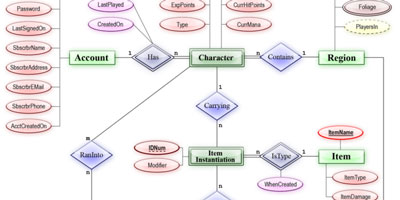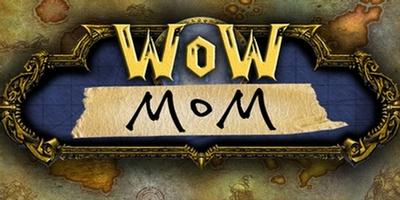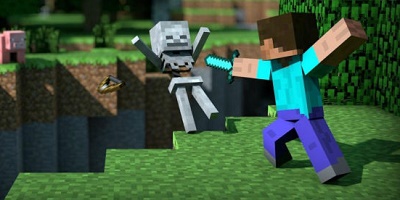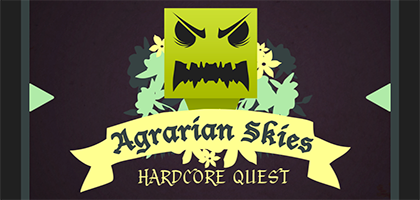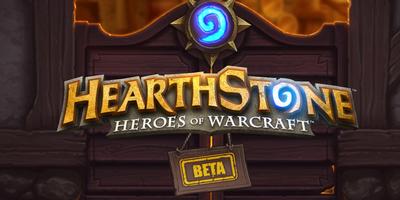- by Arthur "Arturis" Orneck
- Posted on February 17, 2012 @ 4:00 PST

(The following article was originally posted on MMOSite's Quest! Gaming Blog on April 21st, 2011. I have decided that I want to continue writing this column, so I am carrying over the original posts in-tact, bad spelling/grammar/assumptions and all, so that I can show where my thoughts are coming from prior to getting to where they are now - Arturis)
Game Theory: How may I damage thee? Let me count the ways...
Welcome once again, friends, foes and followers alike, to Game Theory, where I take a few moments out of my schedule to discuss the ins and outs of game mechanics and the industry at large. Today we are going to take a look at the gruesome ways that someone can suffer or deal bodily harm in real life, so that we can better understand the ways they bleed over into the gaming world, pun heavily intended.
Every member of the human race, no matter what skin tone you have, accent you speak with, or creed you follow, has at least one key thing in common: We are all remarkably fragile. It takes so little to damage our bodies, that frankly I am surprised that we have managed to survive this long as a species. From minor cuts and scrapes to spontaneous human combustion, there are a million and a half ways that we could suffer physical harm during the course of the day. And its not just human beings that suffer from this lack of impervious-ness - practically anything made of matter can be damaged, including animals, plants, rocks, planets, constructs - just about any "thing" and every "thing". While this thought could (and probably does) keep the paranoid up late into the night, it is the basic tenant that allows for the most exciting aspect of RPG gameplay: Combat!
But analyzing combat is a discussion for another post. Here we are talking about types of damage and how to cause them. From my countless hours of research (watching movies) and case study (playing video games) I have managed to deduce that all physical damage breaks down into the following archetypes (more or less).
Note: Do not try any of these at home on yourself, on others, or on your neighbors pets. Permanent damage could occur, possibly with medical and legal ramifications. Also: They frickin' hurt.

Bludgeoning Damage (aka Blunt Force Trauma)
Bludgeoning damage is when you take two solid masses and aggressively encourage them to occupy the same place simultaneously. Often, this results in one of the two objects denting/splintering/cracking/pulverizing the other less fortunate object. And when that less fortunate object is the human body, well, that's when things get all sorts of mushy and swollen.
Many believe that bludgeoning damage was the weapon of choice for the first murders in human history, including Kain brutally bashing Able over the head with a rock because Able refused to share his Capri Sun, or primitive cavemen beating each other about the head and shoulders with crude clubs to determine who gets to mate with their prehistoric version of Pamela Anderson, depending on who you ask. Either way, the concept of bashing someone into a pulpy mess has been part of culture for as long as there has been a culture to be part of, plus a little extra. Popular bludgeoning weapons include clubs, maces, hammers, and staves.

Piercing Damage (aka Puncture Wounds)
Sometimes, the fastest way to get something to stop moving is to increase the number of holes it has in its body, and that is where piercing damage comes into play. To generate piercing damage, you need to have something relatively pointy; As a general rule, the pointier, the better. You then take the absolute pointiest side of the object, and you thrust it into/through your target, breaking any form of surface tension that may oppose your efforts. Congratulations! You have officially punctured something! In some cultures, this is referred to as "stabbing" and is generally considered illegal when practiced on other humans, but that is outside the scope of this discussion.
The original stabbing weapon of ancient history was the spear, first made from sharpened sticks as well as sharp rocks tied to sticks, but later evolving into the far more advanced "sharp knife affixed to the end of a smoothed stick". Other weapons designed for piercing included daggers and stilettos, while implements such as arrows and bullets achieve piercing damage from a conveniently longer distance.
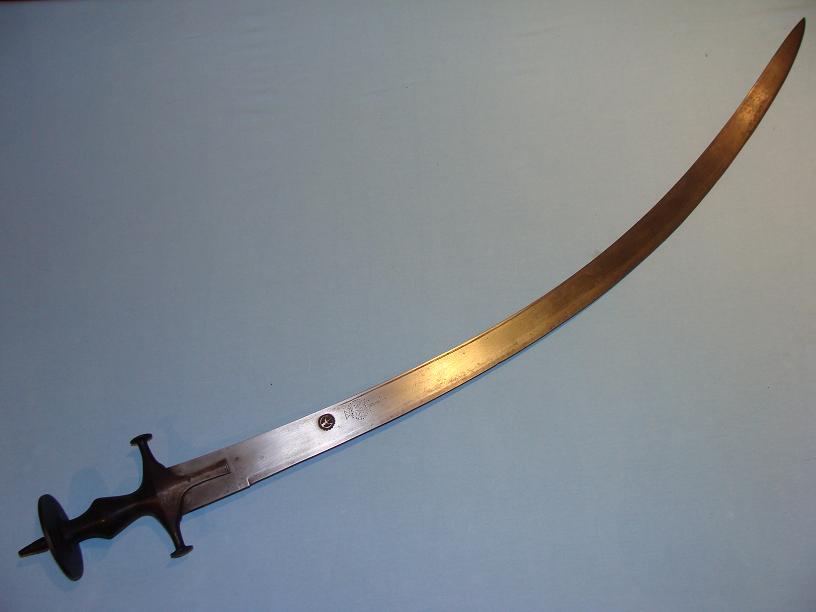
Slashing Damage (aka Lacerations)
Rounding out the Physical Wound Trinity is slashing damage, which is caused when you use the sharpened edge of one object to convince the surface of the target object that staying as a single, unbroken plane is overrated and trite, and that everything would be far more interesting if it were divided into two separate, not quite so continuous planes. This negotiation is handled instantaneously at the subatomic level so as to circumvent the complications that arise from bureaucracy and labor union laws.
The poster child for slashing damage is the sword, which was invented when mankind discovered that they could form metal into whatever shape they wanted, and immediately put this new found knowledge towards brutally slaying each other in horrible and creative ways. Other weapons ideal for getting your "slash on" include the axe, claws and scythe.
Burn Damage
While modern medicine has countless degrees and classifications for various types of burns (mostly invented so that dialogue for Cop and Hospital TV Dramas can sound more exciting) we are going to simplify burns down to their four most common causes: Fire, Acid, Electrical and Radiation. Physical burn damage from any of these types is notoriously difficult to heal, so most of us go to great lengths to not be inflicted by them. However, accidents do happen, especially when they are on purpose, and people suffer burns almost daily.
 Fire is self explanatory, especially when you accept the fact that we are all walking marionettes of meat and bone, easily scorched into man-shaped bacon just by raising our temperature to a certain degree. Even the most feeble minded of cro-magnon men understood the "Fire Bad; Tree Pretty" concept, and it has stuck with us through the generations. However, the dangers of open flame are completely offset by how terribly useful it is. It provides light and warmth, it cooks our food, and it helps eliminate incriminating evidence before the police arrive. In video games, you most often rely on fire in the form of torches to light your way, campfires to huddle around, and 50 foot long jets of searing hot death projecting from the gaping maws of dragons.
Fire is self explanatory, especially when you accept the fact that we are all walking marionettes of meat and bone, easily scorched into man-shaped bacon just by raising our temperature to a certain degree. Even the most feeble minded of cro-magnon men understood the "Fire Bad; Tree Pretty" concept, and it has stuck with us through the generations. However, the dangers of open flame are completely offset by how terribly useful it is. It provides light and warmth, it cooks our food, and it helps eliminate incriminating evidence before the police arrive. In video games, you most often rely on fire in the form of torches to light your way, campfires to huddle around, and 50 foot long jets of searing hot death projecting from the gaping maws of dragons.
Acid (the chemical substance, not the psychotropic hallucinogen) creates what is known as a "chemical burn" that is just as damaging as being burned by fire, but without the inconvenient heat associated. Some acids can erode away flesh at a surprising rate, while others take their sweet time about it. As far as game play goes, acid is a relatively overlooked form of damage, as it is not as pretty/glowey as the other burn inflicters. It is most often associated with alien blood (thanks to Ridley Scott) and as the blood/saliva/digestive enzyme for certain fantasy monsters.
Electrical attacks are usually the most visually flashy of the Burn Quartet, involving arching bolts of blue hot electricity and sometimes a lightly smokey aftereffect. Much like fire, electricity is a naturally occurring phenomenon that we humans have arrogantly subjected to our will for our own daily convenience. I mean, the computer that I'm using to type this (as with the one you are using to read this) rely entirely upon electricity to function. It powers our appliances, our entertainment, our transportation and could potentially strike us dead in a heart beat. In game terms, we usually encounter electricity in the form of lightning bolt spells, as well as sparks and shocks coming off of rudimentary, half-invented machinery.
Radiation burns are often considered a side effect of modern and futuristic science, but radiation itself has been around since the dawn of time and the birth of the universe. The sun we set our watches to emits enough radiation per day to fry our tiny planet to a charcoal briquette if not for a particular combination of atmospheric gases and being just the right distance from its nuclear epicenter. Still, the chance for sunburn is not often considered when developing in-game mechanics for a fantasy setting, so this type of damage is mostly relegated to science fiction games, usually inflicted by residual nuclear fallout in a post-apocalyptic settings. Side note: This is probably the most depressing paragraph I have ever written in my life.

Toxins
Toxins are chemicals that interfere with the human body and how it functions, in the extreme cases causing it to not function at all. There are two types of toxins: Poisons and Venom. The key difference between the two is that Poisons are toxins that are ingested or absorbed (such as drinking tea laced with arsenic or petting a colorful jungle frog) while Venom are toxins that are injected (such as through a syringe or through the fangs of that rattlesnake I hid in your dresser drawer). Toxins can cause a wide array of effects, including delirium, fever, death, or the inexplicable craving for barely cooked 7-11 Cheeseburger Bites (which, by the way, also results in death). Similarly, the way video games handle toxins differ wildly from game to game, such as reduced statistics, slowly draining hitpoints or the inability to recover hitpoints when resting.
Disease/Parasitic Infestation
The other side effect of being a living meat puppet is that we are absolutely delicious to bugs and micro-organisms! Oh yes, when it comes to flesh eating diseases, we are both home and buffet table in one. Both diseases and parasites can devour flesh and muscle, crippling, incapacitating or even killing their host. Though these afflictions appear far less frequently in video games then the more well known Toxins, when they do they bring about similar effects like stat reductions and gradual hitpoint loss.
Special Considerations/Footnotes
Gravity - Falls from great heights would be considered bludgeoning damage, as you are forcefully and expediently trying to make your body and the Earth occupy one overlapping place. One of the two has to give - Unfortunately for you, the Earth is bigger and was here first by several million years. If the Earth calls "shotgun", find another seat.
Explosions - Explosions are unique in the fact that they are both Fire and Bludgeoning (concussive) damage at the same time. That is twice the damage for half the effort! Plus, they blow up all pretty like.
Drowning/Suffocating - These fall more along the line of "cause of death" than "cause of damage" - however, anyone that has experienced either and survived can attest to how painful the experience can be. I'm still not fully sure where this fits in to my theories. Bludgeoning damage from your lungs crushing themselves in an attempt to breath? Im going to have to ponder this one further.
Well now, that is about it for the basic types of damage. Congratulations, we survived! While the overall topic is a tad bit morbid, it is important to establish these principles before we can start discussing game mechanics like Combat and Magic, as quite a lot of how they work tie back to the types of damage that can be caused by particular attacks and spells.
Until next time, readers! Try not to hurt yourself, ok?
2 Comments for this post.
[Mandifesto]
@
1:31:53 PM Feb 17, 2012
Oh so much pain and suffering! I shall swoon this instant!
You must be signed in to post a comment.



